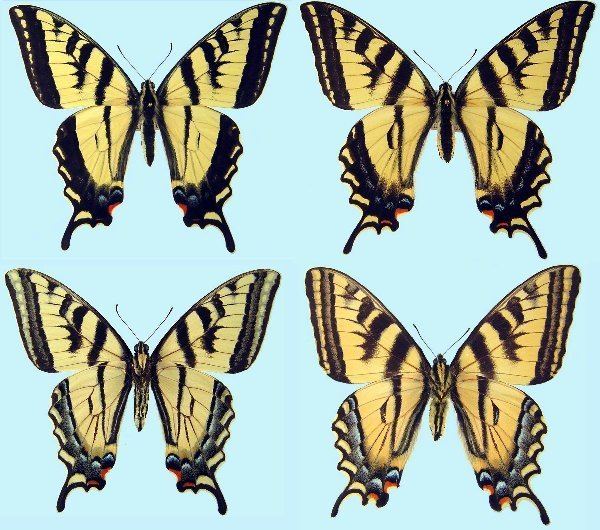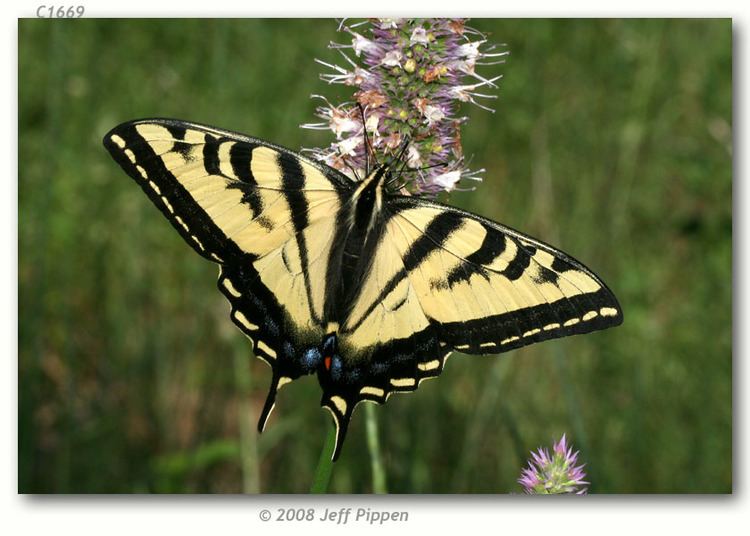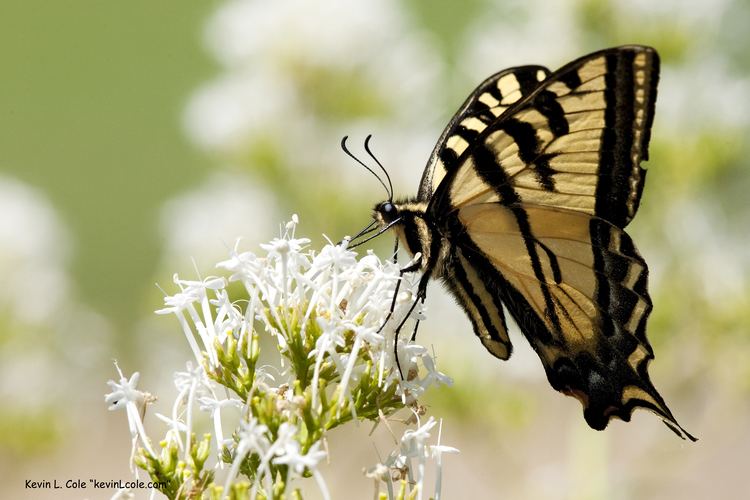Family Papilionidae | Rank Species | |
 | ||
Similar Eastern tiger swallowtail, Papilio eurymedon, Papilio zelicaon, Papilio multicaudata, Lorquin's admiral | ||
Papilio rutulus, the western tiger swallowtail, is a common swallowtail butterfly of western North America, frequently seen in urban parks and gardens, as well as in rural woodlands and riparian areas. It is a member of the Papilio genus, of which Papilio appalachiensis and Papilio xuthus are also members. It is a large, brightly colored and active butterfly, rarely seen at rest; its wingspan is 7 to 10 cm (3 to 4 in), and its wings are yellow with black stripes, and it has blue and orange spots near its tail. It has the "tails" on the hindwings that are often found in swallowtails.

The eggs are deep green, shiny, and spherical. They are laid singly, on the undersides of leaves. The caterpillars emerge about four days later. Young caterpillars resemble bird droppings, and as they molt, they eventually turn bright green, with a pair of large yellow eyespots with black and blue pupils. They can feed on the leaves of a variety of trees, and the predominant food plant varies across their range; trees commonly used include cottonwood, willow, quaking aspen, and many others. The caterpillars molt five times, eventually reaching a length up to 5 cm before pupating. In summer, the butterfly can emerge as quickly as 15 days after the caterpillar pupated, but when the caterpillar pupates in the fall, the butterfly does not emerge until the spring. The chrysalis is green in summer and dark brown in winter, and looks like a piece of wood. Butterflies emerge from winter chrysalids between February and May, the date depending on the temperature, so they are seen earlier in the more southerly and more coastal parts of their range. The adult females lay up to a hundred eggs in total. The males often congregate, along with other species of swallowtail, at pools and along streams and rivers; they drink from the water and mud, extracting minerals, as well as moisture.

The normal range of the western tiger swallowtail covers much of western North America, from British Columbia to North Dakota in the north to Baja California and New Mexico in the south. Individuals occasionally turn up east of this range; in eastern North America, though, it is replaced by the similar eastern tiger swallowtail, Papilio glaucus.

Like the other tiger swallowtails, the western tiger swallowtail was formerly classified in genus Pterourus, but modern classifications all agree in placing them within Papilio.

